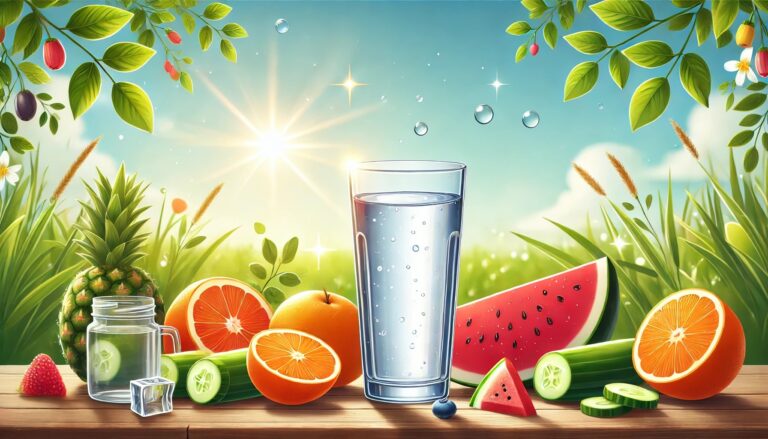Environmental health is an integral part of overall well-being. The environment we live in—air, water, soil, and even the objects we interact with—can significantly impact our physical and mental health. Unfortunately, harmful substances like pollutants, chemicals, and toxins are increasingly present in modern life. By understanding these threats and adopting proactive measures, we can minimize exposure and protect our health.
In this article, we’ll explore the most common harmful substances in the environment, their effects on health, and practical strategies to reduce exposure.
Understanding Environmental Health
Environmental health focuses on the relationship between the environment and human health. It considers factors such as:
• Air quality: Pollutants like particulate matter (PM2.5) and nitrogen dioxide.
• Water quality: Contaminants like lead, pesticides, and microorganisms.
• Soil contamination: Heavy metals, industrial chemicals, and waste.
• Consumer products: Everyday items that may release harmful chemicals, such as plastics or cleaning agents.
Exposure to these substances can lead to both acute and chronic health issues, ranging from respiratory diseases to long-term risks like cancer or neurological disorders.
Common Harmful Substances and Their Effects
1. Air Pollutants
• Sources: Vehicle emissions, industrial activities, indoor smoking, and burning fuels.
• Health Effects:
• Short-term: Coughing, asthma, and eye irritation.
• Long-term: Chronic respiratory diseases, cardiovascular issues, and lung cancer.
• Key Pollutants: Particulate matter (PM2.5 and PM10), ozone, carbon monoxide, and sulfur dioxide.
2. Water Contaminants
• Sources: Agricultural runoff, industrial discharges, and aging pipelines.
• Health Effects:
• Microbial contamination can cause diarrhea, cholera, and other waterborne diseases.
• Chemical contaminants like lead and arsenic may damage organs and increase cancer risk.
3. Household Chemicals
• Sources: Cleaning products, pesticides, air fresheners, and personal care items.
• Health Effects:
• Skin and eye irritation from direct contact.
• Long-term exposure to volatile organic compounds (VOCs) can harm the respiratory system and lead to headaches or fatigue.
4. Plastics and Microplastics
• Sources: Packaging, single-use plastics, and degraded plastic waste.
• Health Effects:
• Plasticizers like BPA and phthalates disrupt hormonal functions.
• Microplastics ingested through food and water can accumulate in the body, potentially causing inflammation.
5. Heavy Metals
• Sources: Contaminated soil, water, and certain foods (e.g., mercury in fish).
• Health Effects:
• Lead exposure impairs cognitive development in children.
• Mercury damages the nervous system and kidneys.
Strategies to Reduce Exposure to Harmful Substances
1. Improve Indoor Air Quality
• Use air purifiers to reduce pollutants like dust, pet dander, and VOCs.
• Ensure proper ventilation when cooking or using household chemicals.
• Avoid smoking indoors and choose non-toxic paints or furniture.
2. Choose Safe Drinking Water
• Use water filters to remove contaminants like lead or pesticides.
• Test tap water for harmful substances and report issues to local authorities.
• Store water in glass or stainless steel containers instead of plastic bottles.
3. Limit Plastic Use
• Replace plastic containers with glass, stainless steel, or silicone alternatives.
• Avoid heating food in plastic containers, which can release harmful chemicals.
• Opt for reusable shopping bags and biodegradable packaging.
4. Use Natural Cleaning and Personal Care Products
• Choose eco-friendly, non-toxic cleaning products.
• Make DIY cleaners using ingredients like vinegar, baking soda, and essential oils.
• Avoid personal care products containing parabens, sulfates, and synthetic fragrances.
5. Minimize Exposure to Pesticides
• Wash fruits and vegetables thoroughly to remove pesticide residues.
• Choose organic produce when possible to reduce chemical intake.
• Avoid using chemical pesticides in your garden; opt for natural pest control methods.
6. Be Aware of Environmental Toxins
• Regularly monitor air quality using apps or websites.
• Stay indoors on days with high pollution levels or wear masks when necessary.
• Reduce consumption of fish high in mercury, such as swordfish and tuna.
Global Trends in Reducing Harmful Exposure
Green Technology
Innovations such as electric vehicles, renewable energy, and sustainable building materials are reducing environmental pollutants at the source.
Policy Changes
Governments worldwide are implementing stricter regulations on industrial emissions, single-use plastics, and chemical usage.
Consumer Awareness
More individuals are adopting eco-friendly lifestyles, choosing products that are sustainable, recyclable, and free from harmful substances.
Why Environmental Health Matters
Taking action to minimize exposure to harmful substances has far-reaching benefits:
• Physical Health: Reduced risk of chronic diseases and improved respiratory and cardiovascular function.
• Mental Health: Cleaner environments contribute to better mood and reduced stress levels.
• Ecosystem Protection: Reducing pollution safeguards biodiversity and supports sustainable living.
Conclusion
Environmental health plays a critical role in protecting our well-being. By understanding the common sources of harmful substances and implementing practical measures, we can create a safer and healthier environment for ourselves and future generations. From reducing plastic use to improving air and water quality, every small change can make a big difference.
Start today by taking simple steps toward reducing your exposure to harmful substances and promoting a cleaner, healthier world!




















